Morocco is so close
Morocco has been on our “places we have to visit” list ever since we moved to Lisbon. So earlier this year we signed up for a Moroccan food tour. It started in mid-April in Casablanca and then and traveled throughout the country. The tour didn’t spend any time in Casablanca, so we went a day early, specifically so we could take a tour of the Hassan II mosque.
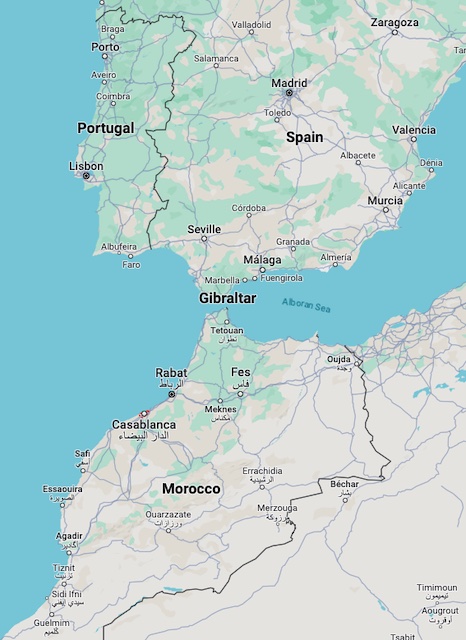
Map data (c) 2024 Google
It’s not the city you think it is
Almost everyone thinks they know something about Casablanca. Mostly because they saw that movie with Humphrey Bogart and Ingrid Bergman.
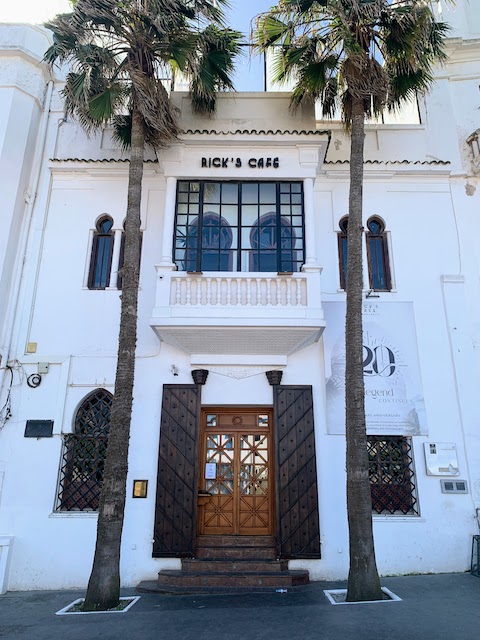
And, yes, there’s a Rick’s Cafe in Casablanca. We’re told it’s an exact replica of the set in the film. But Casablanca the film was shot in Hollywood, not Morocco.
The city was originally called Anfa, a word in Amazigh (Berber) that means “high place”. We learned that the area was damaged heavily by the same earthquake in 1755 that destroyed much of Lisbon. At that time, Portugal occupied parts of Morocco. The Portuguese helped rebuild the city and renamed it Casa Branco – the white house.
Today, 7 million people live in Casablanca.
We took a tour of the city and saw modern housing developments and shopping malls. Our guide pointed out a McDonald’s restaurant on one corner and told us it was the first one opened in Morocco in 1988. There are so many of them now that the locals call them “embassies”.
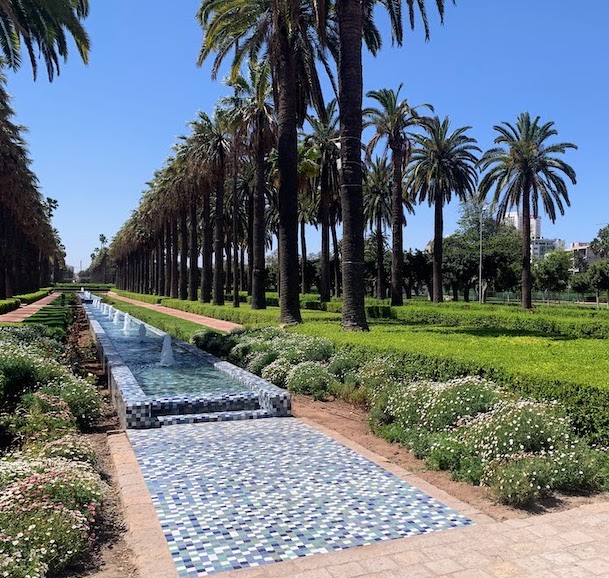
There was very little traffic in downtown Casablanca on the day we were there. That was because it was a holiday – the third day of Eid al-Fitr – “the festival of the breaking of the feast” that marks the conclusion of Ramadan, the Muslim holy month when believers fast from dawn until sunset.
Eid al-Fitr traditions include visiting family and friends, eating traditional desserts and sweets, and wearing new clothes. Children are often given gifts and money. All of this was taking place out of sight for us, though we did see families on the street who appeared to be dressed up.
Touring the Hassan II mosque
The highlight of our day of Casablanca was the opportunity to visit the Hassan II mosque. This is one of the largest mosques in the world and one of a very few where non-Muslims can enter. It was commissioned in 1986 by then King Hassan II, the father of Mohammed VI, the current king.
Building the mosque took 7 years. Over 10,000 artisans and craftsmen worked on the project. All of the main materials used – granite, plaster, marble, wood – came from Morocco. Two elements were imported from Italy – columns of Carrara marble and glass chandeliers from Murano.
Outside the mosque
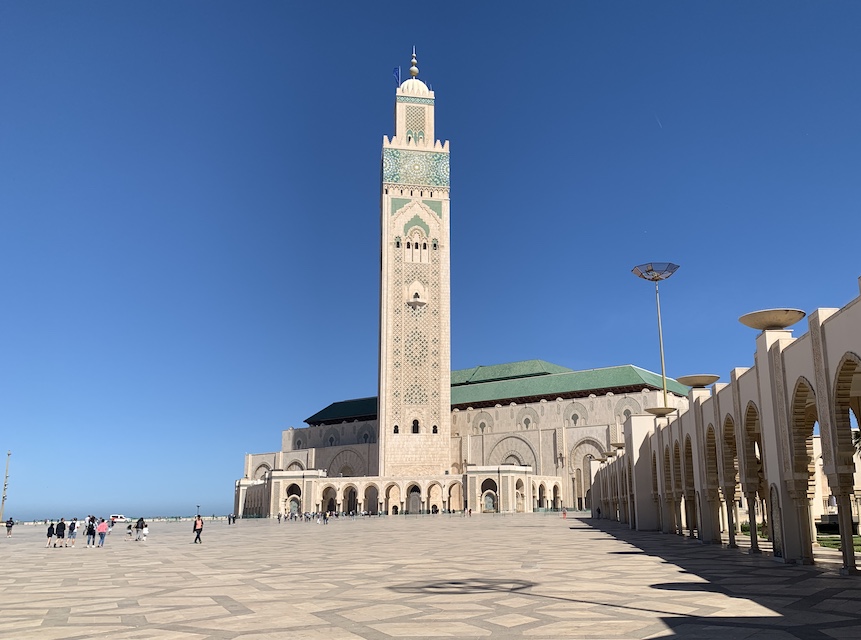
From the outside, the scale of mosque and surrounding campus is nearly overwhelming. The minaret is 210 meters (690 feet) tall. The building is 200 meters (660 feet) long and 100 meters (330 feet) wide. The upper section of the roof is retractable. It can be opened in 5 minutes to allow worshippers to pray under the blue Moroccan sky.
The plaza surrounding the mosque can hold 80,000 people when the prayer hall inside is full.
The entire complex is 9 hectares (22 acres) and also includes a hammam (bathhouse), a madrassa (Islamic school), a museum, library, and a conference center.
At the top of the minaret is a feature we learned is common on many mosques. The round balls represent the three major world religions – Judaism, Christianity, and Islam.
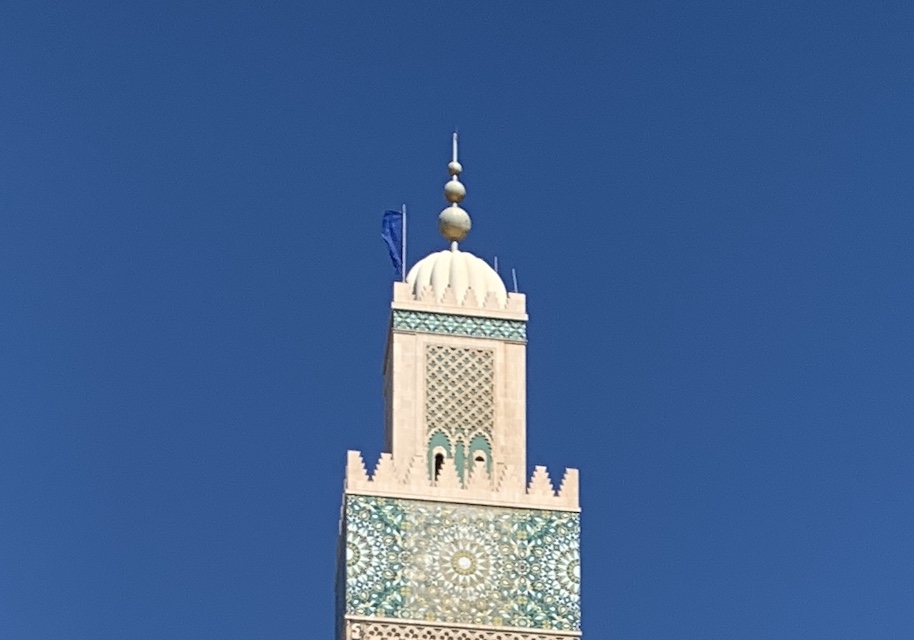
Inside the mosque
The immense size of the mosque becomes clear once you step inside. Everyone entering must remove their shoes, so our walk through the mosque was very quiet. The prayer hall is divided into three long areas separated by tall archways covered in intricate designs.
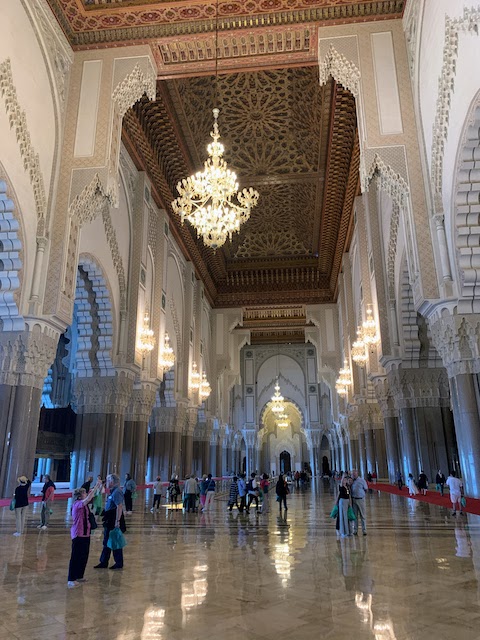
On the north side of the mosque, facing the sea, at each end of the building are large doors with 28 decorative windows above them.
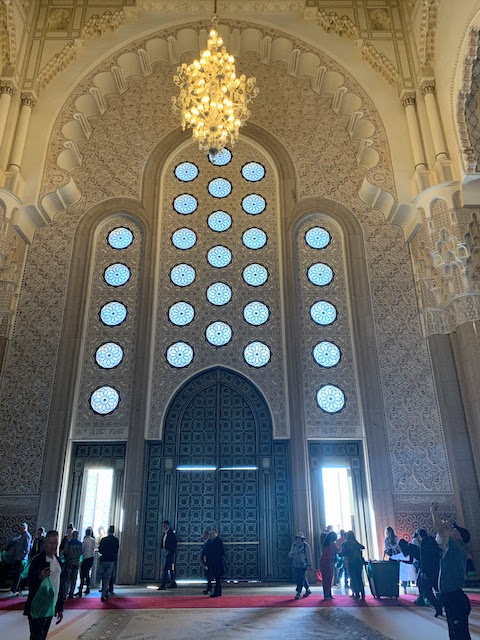
At the east end of the prayer hall, the end facing Mecca, is the archway and niche where the imam stands during the prayers. To the right of the arch is a raised wooden pulpit where he delivers his sermon during Friday prayers.
Before services, the marble floors are covered with long carpets that have lines on them to indicate the rows that worshippers form. We were told that the mosque fills up from the front to the back. (No hiding on the back rows!)
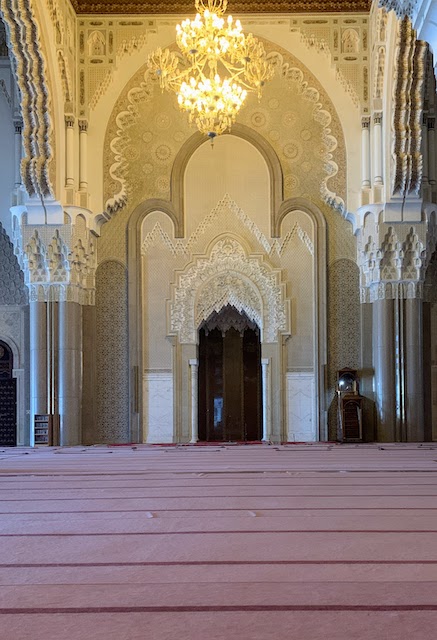
The prayer hall can hold 25,000 people – 20,000 men on the main level and 5,000 women on the two balconies.
The details are fascinating
Much of the interior is covered with finely detailed geometric patterns made from plaster. The artisans who created these designs had to make them while the plaster was still damp.
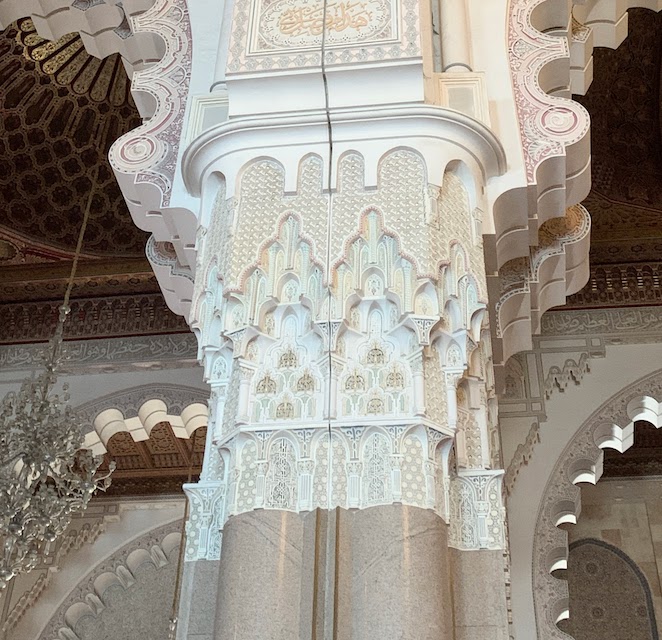
Our guide told us that all mosques have large doors in their monumental entrances. These are usually made of carved wood. But because the Hassan II mosque sits by the sea, wooden doors would have to be replaced every few years at great expense. So instead of wood, the doors were made of titanium.
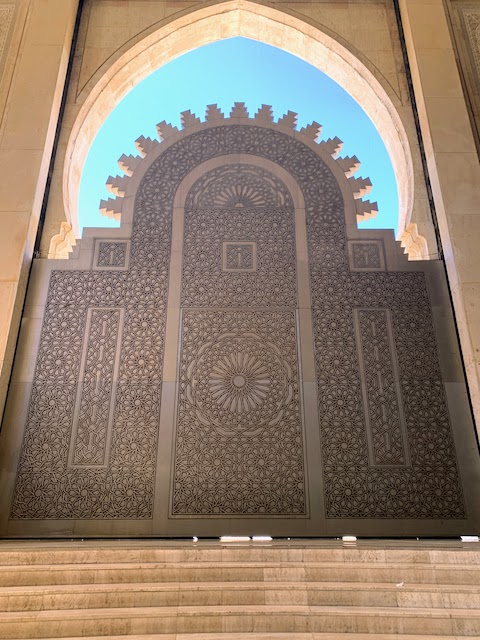
Our guide was exceptional
We had a special guide for our tour of the mosque, an older gentleman who wore dark glasses. He told us “I have a problem with my eyes, but not with my mouth”. His daughter, a young woman wearing a bright blue djellaba, led him by the elbow from point to point around the mosque. At each stop, he explained what we were seeing, giving us historical and cultural details to aid our understanding. He also gave us insight into the religious traditions and practices of Islam.
One example was his explanation of the ablutions – the ritual washing that every Muslim must do before praying. He described the process of washing the face, the hands, each arm from finger tip to the elbows, wiping the head, and washing both feet. Each area was repeated more than once.
He told us that Muslims in the desert, where water was scarce, could perform the ritual using sand, without as many repetitions. In other situations where water is limited or one is suffering from illness or infirmity, he said a stone could be used to rub the surfaces of the skin.
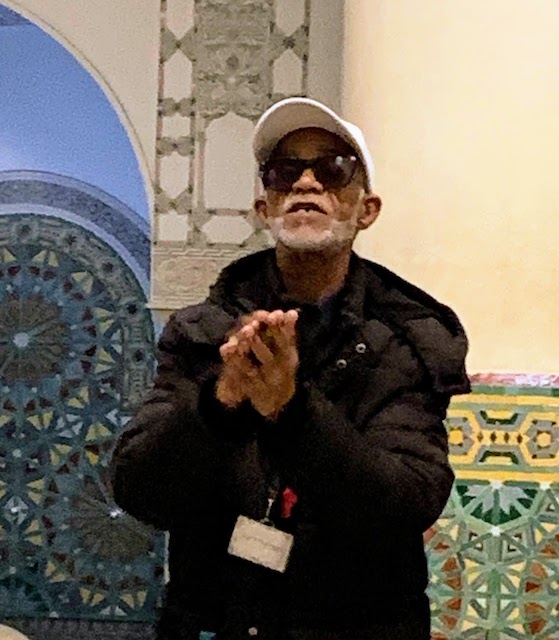
After the tour was completed, we spoke to the guide. He introduced himself as Hajji Halil. “My name is Halil and I was given the name Hajji because I have completed the hajj, the pilgrimage to Mecca. So I have completed the five pillars of Islam and now I wait for my time in paradise.”
When he learned we were from Lisbon, he smiled and said, “So, we are neighbors! We are good friends with the Portuguese.” He continued, “In 2030, if God is willing and I am still alive, we are going to beat you in the World Cup.” Then he grasped my hand and said “And then you must come back here and join me at my house. We will eat cous cous together.”
So it appears that we’ll be returning to Casablanca in a few years.
More to come
When we landed in Casablance, I made a note on my phone – “We’re in Africa!” We knew we were in for a very different experience, and we were right.
Morocco is unlike any place we’ve ever been to before. We are still processing everything we saw, smelled, tasted, and experienced in a too short stay in the country. In our next post we’ll have more reflections about the food, our tour, and the generous hospitality of the Moroccan people we met.
Until next time / Até a próxima vez
Mary and Mike
The Cook and The Writer

Have you had a travel experience that challenged all your preconceived notions? Where did you go that rattled your cage? Leave your thoughts in the comments below or via the Contact Us form.

Love your blog! Thank you for sharing such a beautiful article about Casablanca mosque.
How funny that you just went there! Jim and I are going to Fez for just a few days next week. 🙂
Thanks for sharing Mike & Mary. We look forward to learning more.
Mike and Mary
What a wonderful journey and experience. Great post!
Hi Mike & Mary,
Your post is very timely. Steve and I are coming to Portugal to walk the Caminho Português in late August through September followed by a month’s stay in Morocco. We will be mostly in Fes but have an overnight in Casablanca both on the way in and out. We have seen some of the Mosques in Istanbul, and look forward to seeing this one as well.
As always, your post was well researched and well written. I am definitely anticipating your next post about the food. Yum.🙂
Katie Anthony
Beautiful pictures and nice post! So happy you had the chance to visit the mosque and Casablanca. -CW